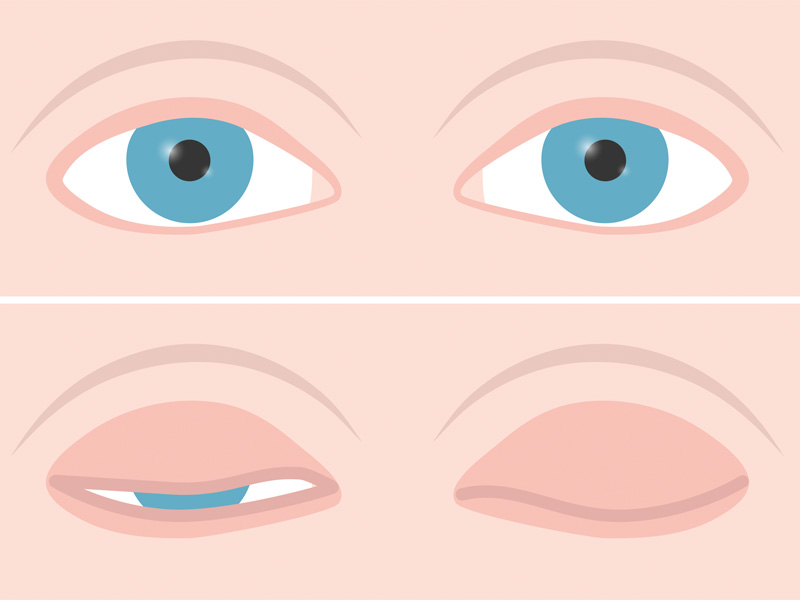All about the skin around the eyes and “drooping” eyelids
04/04/2025

28/11/2018
Lagophthalmos is the inability to close the eyelids completely, leaving a half-opened, exposed space between the upper and lower eyelids.
As the surface of the eye is then exposed without full blinking action, the tear film covering the eye tends to disappear, causing dry eyes, meaning it is predisposed to suffering infections and ulcers in the cornea which may severely affect the quality of vision.
The patient may find their eye remains half-open when they try to close it. Furthermore, they may notice symptoms of dry eye, such as the sensation of a foreign body, tearing, reddening, pain or blurred vision, to a varied extent.
One of the most common causes of lagophthalmos is facial palsy which makes it impossible for the orbicularis oculi in the eyelids (the muscle that closes the eyelid) to work properly and causes the lower eyelid to droop. It may, at times, be the result of an external factor such as a surgical procedure performed on the eyelid, for example, removal of a tumour or having a blepharoplasty. It may also be caused by exophthalmos (bulging of the eye anteriorly) in patients affected by thyroid orbitopathy or even scars secondary to trauma or burns affecting the eyelid and its functioning.
Treatment
In terms of treatment, it’s essential to use an intensive course of eyedrops or ointments, so that the eye remains lubricated and protected. It’s essential to cover the eye at night. Wet occlusion is preferred, using special patches.
There are severe cases of lagophthalmos which must be occluded and, in prolonged cases, surgical treatment is required. Depending on the cause, it may be treated by placing a small gold plate on the upper eyelid, which, due to its weight and the force of gravity, helps to close the palpebral fissure completely, in cases of facial palsy. The most commonly used procedure to correct a lower eyelid eversion or dropping is a lateral canthal strip, which involves improving the tightness of the lower eyelid by resuspending it on the edge of the lateral bone. Reconstructive palpebral surgery may also be an option for patients with scars causing the lagophthalmos. In any case, unless the eye is at high risk, the surgical procedure is usually performed some time after the cause of the lagophthalmos has been found (normally after few months have passed), once it has been confirmed that no spontaneous improvement has occurred nor does it appear possible.